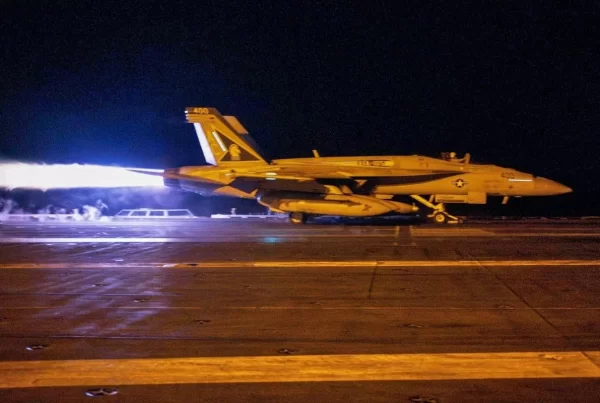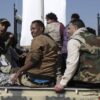The power-sharing agreement between the internationally recognized Yemeni government and southern separatists is still on paper more than two months after it was signed in Riyadh, which raises fears of a re-outbreak of fighting between the two sides, according to analysts.
The war in Yemen has been mainly fought between Houthi rebels close to Iran and pro-government forces backed by a military alliance led by Saudi Arabia and the United Arab Emirates since the Houthis took control of large areas of the country more than five years ago.
But there are deep differences in the anti-Houthi camp. The forces which are supposed to be loyal to the government in the south, from which the recognized government is based, include factions that support secession from the north. The south was an independent country before the unification of Yemen in 1990.
In August, southern Yemen witnessed battles between pro-secessionist forces and pro-government forces that resulted in separatists controlling several areas, the most important of which is Aden, the interim capital of the recognized authority since the Houthi rebels seized Sanaa in September 2014.
Saudi Arabia sponsored a power-sharing agreement between the two sides to avoid a “civil war within a civil war,” which was signed by the government and the Southern Transitional Council, the most powerful political authority in southern Yemen, in Riyadh on November 5.
None of the terms of the agreement were implemented except for the return of Prime Minister Moeen Abdul Malik Saeed to Aden. On January 5, the deadline for integrating armed groups in the south within the framework of the Yemeni Ministry of Interior ended.
Yemeni President Abd Rabbu Mansour Hadi has not appointed a new governor in Aden or a new director for security.
The agreement stipulated that the main separatist force should assume a number of ministries in the Yemeni government.
“The agreement had a very ambitious schedule,” said visiting researcher at the Chatham House Institute, Farea Al-Muslimi.
New “problem”
According to Elizabeth Kendall, a researcher on Yemen at Oxford University, it is the lack of trust between the government and the separatists that prevents the two sides from implementing the agreement.
“It appears that the two sides reluctantly entered the agreement at the request of their sponsors,” she asserted, referring to Saudi Arabia, which supports the government and the Emirates that have trained the southern transitional council.
“There are other major challenges, including the complete lack of confidence between the two parties, impossible deadlines and conflicting interpretations,” Kendall said.
Despite the government and the Southern Transitional Council repeatedly reiterating their commitment to the agreement, analysts warn that fighting could erupt again in southern Yemen.
“The agreement turned into a problem that everyone is looking for out of,” Al-Muslimi told AFP.
According to al-Muslimi, the transitional council is “strengthening its authority on the ground.”
Peter Salisbury, an expert on Yemeni affairs in the International Crisis Group, stresses that over time, “the longer the period, the more people will lose confidence in the agreement.”
Salisbury warned of the “current danger that an event will lead to a renewed conflict between the government and the Southern Transitional Council.”
During a meeting in Aden on Monday, the President of the Southern Transitional Council, Aidarous Al-Zubaidi, renewed the council’s commitment to the Riyadh agreement.
– Little hope –
Kendall warned that security and stability in southern Yemen remains a “dangerous” matter, pointing to the ongoing clashes in other areas of the south, such as Shabwa and Abyan, between different sides.
Kendall said that there was “not much hope left” in southern Yemen.
For his part, Al-Muslimi said that more efforts should be made diplomatically in order to save the agreement in Yemen.
And the power struggle in Yemen has killed tens of thousands of people, including a large number of civilians, according to humanitarian organizations, especially since the start of coalition operations against the rebels to stop their progress in neighboring Yemen, the kingdom in March 2015.
In addition to the victims, there are still 3.3 million displaced people, while 24.1 million people, or more than two-thirds of the population, need help, according to the United Nations, which describes the humanitarian crisis in Yemen as the worst in the world today.





